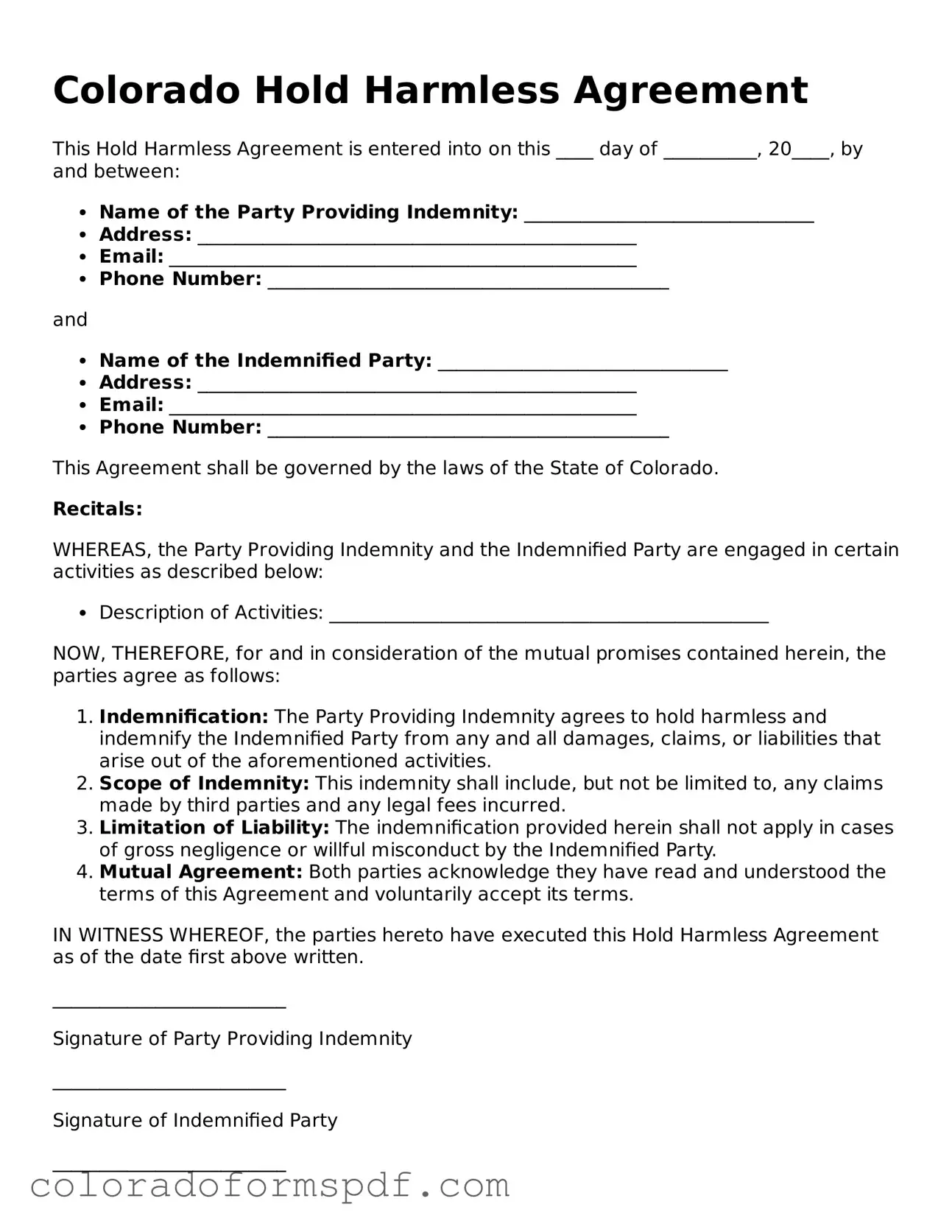The Colorado Hold Harmless Agreement form serves as a crucial legal document designed to protect parties from liability in various situations, such as events, activities, or the use of property. This agreement outlines the responsibilities of each party involved, ensuring that one party agrees not to hold the other responsible for any injuries, damages, or losses that may arise during the specified activity. It is commonly used in scenarios ranging from recreational events to construction projects, where the risk of accidents is inherent. By signing this form, individuals or organizations can establish clear expectations and reduce the likelihood of disputes over liability. The agreement typically includes essential elements such as the identification of the parties, a detailed description of the activity, and the specific risks involved. Furthermore, it often requires the signature of the participant, indicating their understanding and acceptance of the terms. In a state like Colorado, where outdoor activities and community events are prevalent, the Hold Harmless Agreement plays a vital role in fostering safe environments while allowing individuals to engage in various pursuits without the constant fear of potential legal repercussions.
